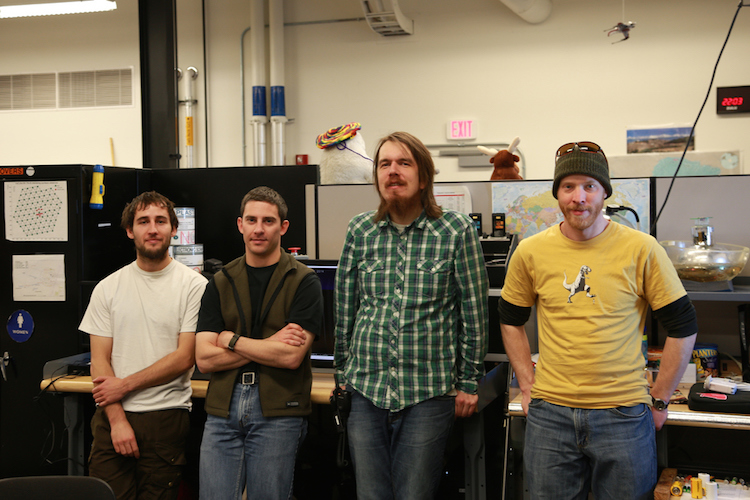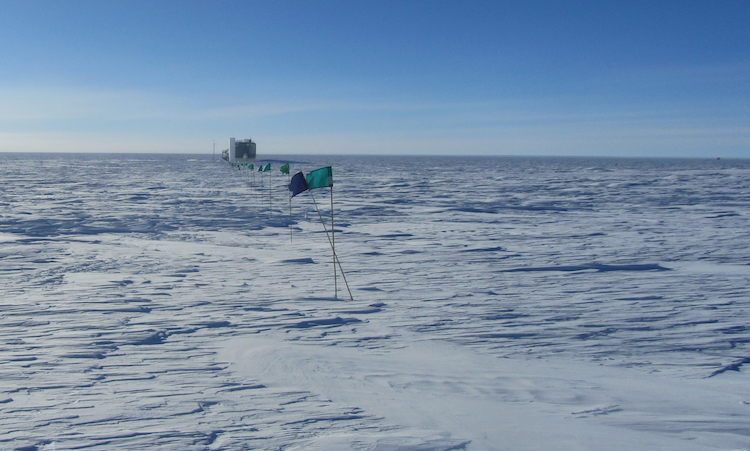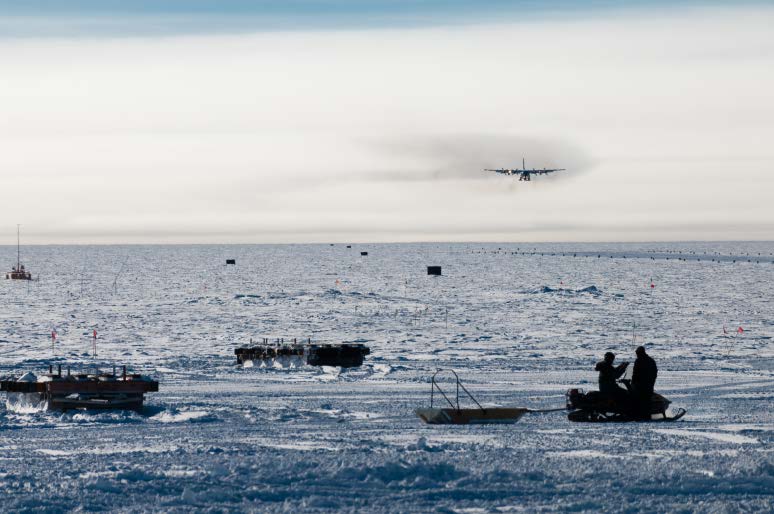A new polar season for IceCube
After a long winter, South Pole inhabitants are getting used to the sunlight again. Up north, a bunch of IceCubers are getting ready for their Antarctic adventure. For some of them, it’s all about the excitement of a first trip to Antarctica. For some others, it’s an almost annual appointment that makes their job a special one.
Erik Beiser and Stephan Richter, the new 2014-15 IceCube winterovers, stepped onto South Pole ice on November 6 with the first flight of the season. They are there to stay for a year: first enjoying the hectic months of the austral summer at the Admundsen-Scott South Pole Station, and then becoming two of the solitary souls in the darkness of the austral winter.

Now it’s time to finish their training. The incoming winterovers have learned about the IceCube data taking systems in Madison and also about other South Pole systems in Denver. Their expertise is further solidified on-ice through their interactions with the outgoing winterovers, Dag Larsen and Ian Rees.
Other activities during this season include the maintenance and updates of the computing and power units in the IceCube Lab (ICL). “This year, new power distribution units will allow IceCube winterovers to monitor some of our custom-built readout systems, the so-called DOMHubs, from the station without requiring them to walk out to the laboratory,” says Ralf Auer, who is the system administrator for the South Pole data center. The walk to the ICL is about 1 km long, a short scenic route when the weather is nice that can feel like a long nightmare with wind and temperature approaching -100 F.

“The remote-controlled units will help to reduce detector downtime and start data taking faster after a system crash,” explains Auer. Ian and Dag, now leaving the Pole, have set a new record for IceCube uptime, at 99.5% on average during the last year. The new system might help Erik and Stephan, the brand new winterovers, to improve this register.
Moreover, the disk array storage deployed last year has proven to be stable and reliable and will grow to become the main on-site IceCube data storage system, replacing the old magnetic tapes.
Also new for this season are planned IceTop measurements to better understand how the accumulated snow might be affecting the performance of the detector. About 20-25 cm of snow accumulates on top of each IceTop tank every year, with snow heights up to 2.5 m measured these days. “Initially, we thought that we could keep snow level limited, but currently snow management is too expensive at the Pole. As the accumulated snow grows, we want to improve our understanding of its impact on what IceTop measures,“ explains Sam De Ridder, a graduate student at University of Ghent, who will be traveling to Antarctica in early January.
IceTop was designed to detect the showers of particles created by the interaction of cosmic rays with the atmosphere. However, due to the accumulated snow, IceTop is becoming more and more sensitive to muons compared to the electromagnetic part of the air shower. A good knowledge of the muon signal in the shower is very important for measurements of the cosmic ray composition but also for using IceTop as a veto for neutrino searches in IceCube.
For this reason, several measurements of the muon signal around the tanks will be performed during this season, as well as more detailed measurements of the snow density. “We are pretty confident that with these measurements we can improve the handling of the snow in IceTop and gain more knowledge for the future IceCube surface extensions,” adds De Ridder.

Even with the IceTop measurements and some further activities, this is not a busy season for IceCube. “It will be a light workload for Cubers at the Pole this year, probably the least amount of activity for IceCube since the 2002/2003 season. Our population is down to 16 compared to 100 during peak construction. We are shipping only 3800 pounds of cargo, and we used to have about 25,000 pounds for each IceCube string,” says Jim Haugen, who is responsible for IceCube’s South Pole planning and logistics.
Researchers from US, Germany, Belgium and Korea will make sure that everything is ready for another year of data-taking. “I am excited for the 10 IceCube first-timers who will be working at Pole this year. It’s always thrilling to arrive at Pole, but nothing beats that first time when the Herc glides to a stop and the loadmaster opens the door flooding the plane with very cold air prior to leaving the plane,” adds Haugen.
Among the fortunate Antarctic travelers, Armando Caussade of Puerto Rico is the NSF/PolarTREC teacher who will participate in some of the IceCube activities and engage more Hispanic students in astrophysics research. Follow his journal here.
